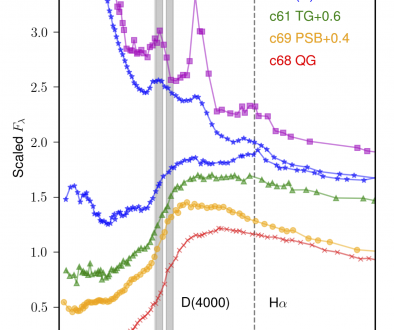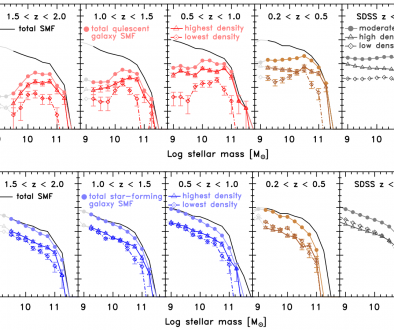Forrest 2016 Summary
We build a set of composite galaxy spectral energy distributions (SEDs) by de-redshifting and scaling multi-wavelength photometry from a mass-selected sample of ~4000 galaxies in the ZFOURGE survey. After adding far infrared data from Spitzer and Herschel, we test the efficacy of the UVJ diagram at 1
Blue star-forming galaxies show IRX and β values consistent with local relations; dusty star-forming galaxies on average appear bluer than expected for their IR fluxes. We measure a tight linear relation between rest-frame UVJ colors and dust attenuation for star-forming composites, providing a direct method for estimating dust content from either (U-V) or (V-J) rest-frame colors for star-forming galaxies at intermediate redshifts.
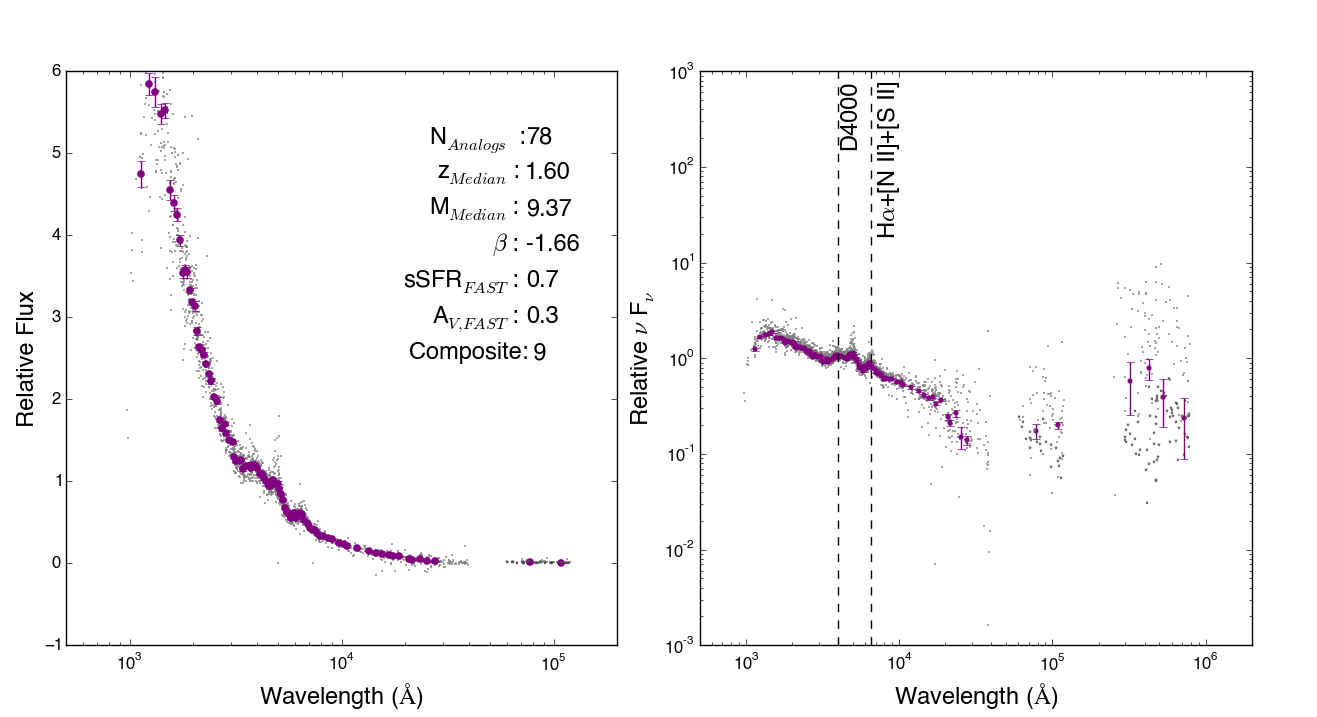
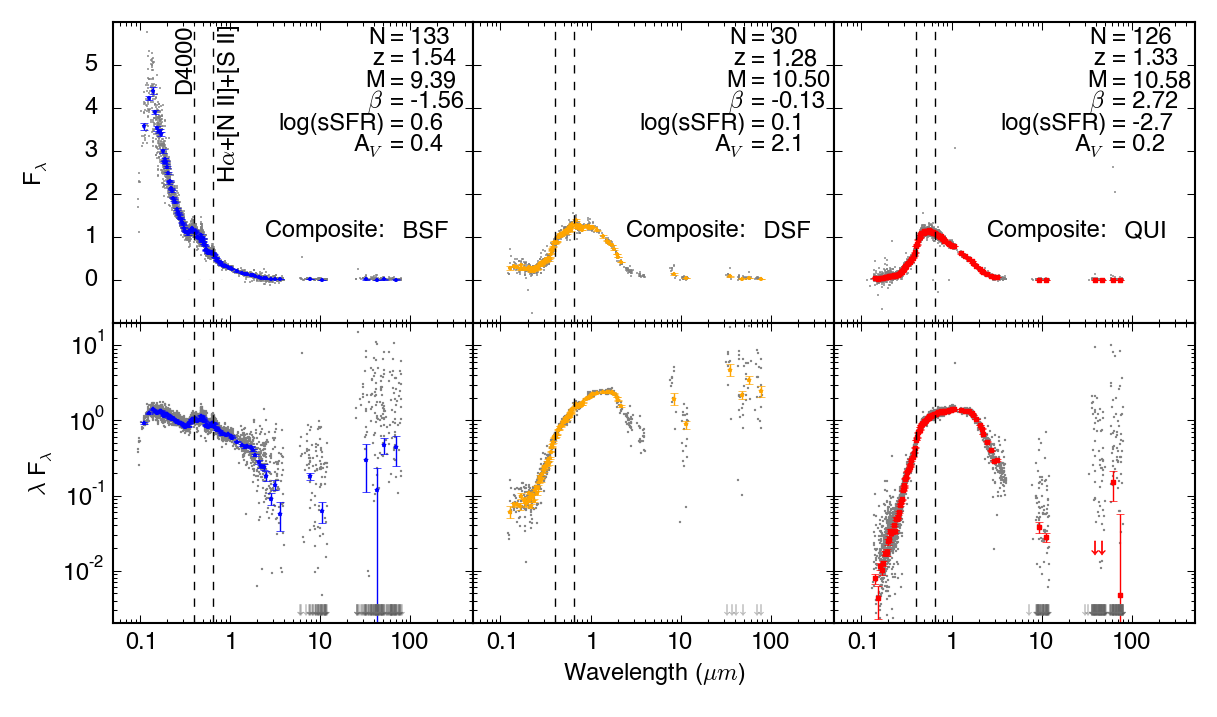
Composite SEDs (colored points) are constructed from de-redshifted and scaled photometry of many galaxies (gray points). These SEDs have resolving power R~45 in the optical, allowing analysis previously unavailable without spectra.
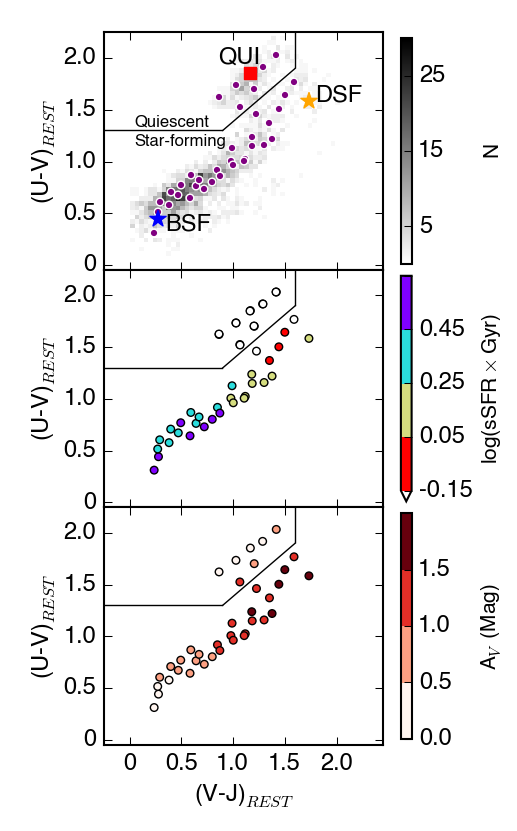
Our 38 composite SEDs show a range of UVJ colors. Quiescent composites are effectively split from star-forming composites by the typical UVJ wedge (Williams, et. al., 2009).
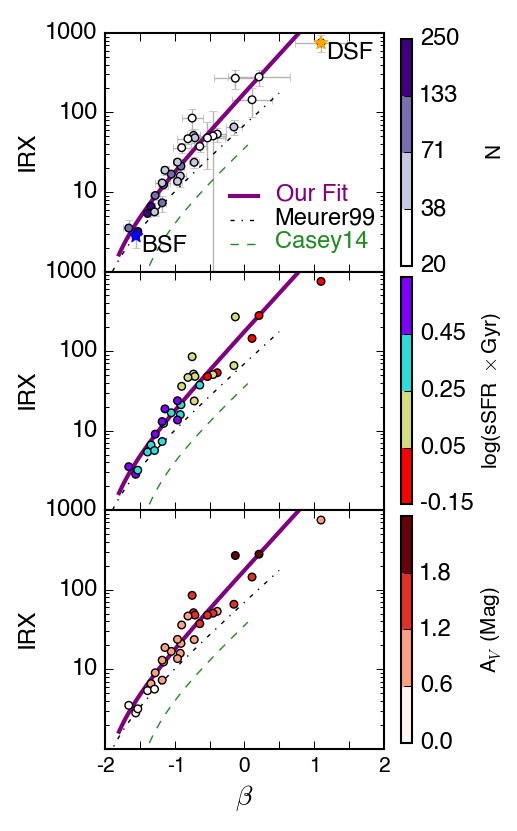
The ratio of IR to UV luminosity (IRX) versus the UV slope (β) for our star-forming composite SEDs. Dusty composites (top) are bluer than expected from local relations (black line) for a given IR flux.
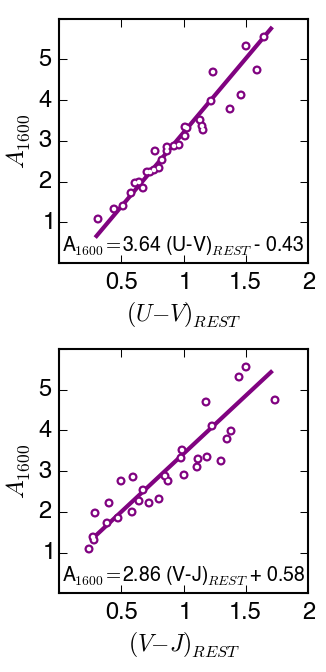
Fit relations between our derived A_1600 and UVJ rest-frame colors, which can be used to estimate UV dust attenuation.
